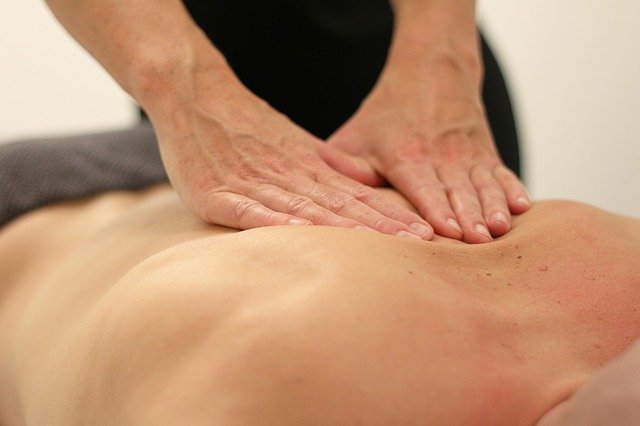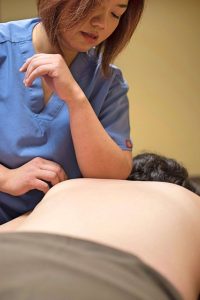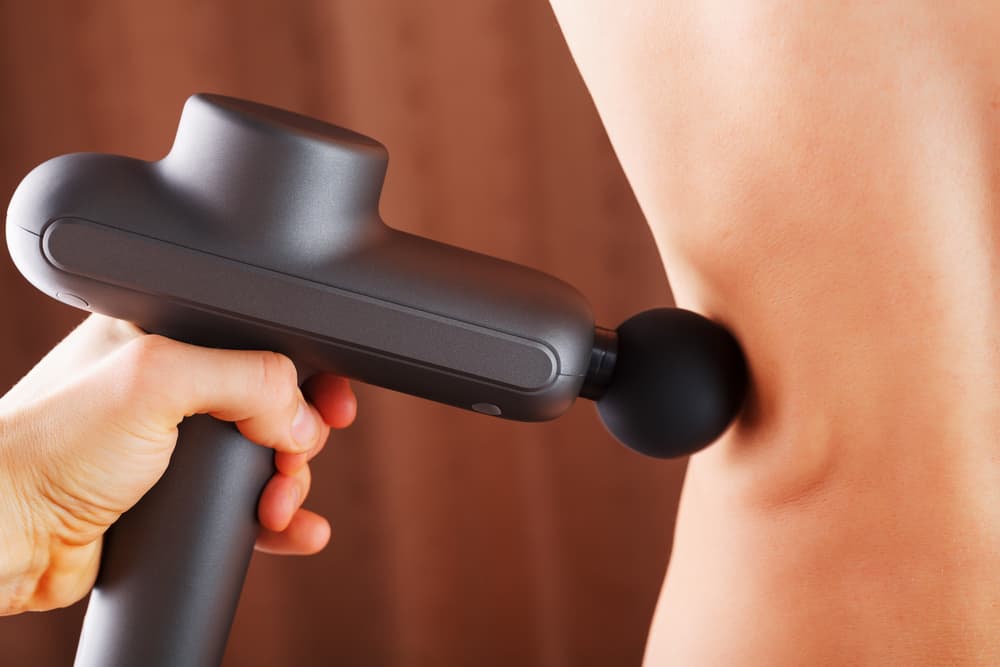
Massage has long been considered a great way to get pampered and relax. But, it is also an important therapeutic tool that can contribute to overall wellbeing, as well as caring for specific pain, mobility issues, or other medical conditions. Deep tissue massage is a type of massage that specifically addresses the deep musculature of the body. Read on for the basics about this therapeutic technique, and how you can enjoy its many benefits.
What is deep tissue massage?
Deep tissue massage is a specific type of massage in which a professional masseuse or physical therapy expert uses deep massage techniques to address musculoskeletal issues, pain or medical conditions related to the muscular or skeletal systems.
It is, as the name implies, a deeper type of massage than other types such as Swedish massage. The specific techniques that are used apply deep and continuous pressure to the body, in order to reach the deeper levels of muscle. Many patients report feeling immediate relief, while others consider the massage itself a bit uncomfortable, but experience great benefits afterward.
To correctly administer this type of massage, the practitioner must have extensive knowledge of anatomy, and it should only be performed by qualified professionals, such as massage therapists, physical therapists, doctors, or chiropractors.
Deep massage therapy is often recommended to treat strains or sprains caused by sports or everyday life activities, as well as for those with medical conditions. It can be of benefit not only to those who suffer from chronic pain, but also to individuals with a wide variety of medical problems such as high blood pressure and diabetes.
How deep tissue massage works?
The deep, slow pressure that is administered during a deep tissue massage brings relief to those suffering from aches and pains in several different ways.
Breaks down scar tissue
First of all, the pressure can help break down scar tissue that has formed in the muscles or connective tissue. The painful scarring that occurs in these tissues can also form adhesions that affect mobility. A skilled deep tissue massage therapist understands how to pinpoint these areas of scarring and release and gently stretch them, which can increase range of motion and decrease pain.
Increases blood flow to promote healing
It also brings blood flow to the tissues that are being massaged. This blood delivers oxygen to stimulate healing and decrease inflammation. This increases circulation throughout the body, which initiates a body-wide healing response.
There is a wide range of techniques that can be used for deep tissue therapy, some of which may cause discomfort during the massage. Clients should work with their therapist to determine which techniques are appropriate for them and what level of massage they can tolerate in order to get relief. Some people love the feel of a deep tissue massage, even with a bit of discomfort, while others prefer a much lighter touch.
What issues can you treat with deep tissue massage?

This type of massage is generally well-tolerated by most people, and almost everyone can benefit from it! Many athletes regularly receive these treatments to keep their muscles stretched and limber, and to decrease the pain from their everyday injuries and intense workouts.
Deep tissue massage can treat pain caused by a variety of conditions of the muscular and skeletal systems, such as arthritis or bursitis (swelling of the bursa or cartilage), and after recovery from an injury, such as a break or surgery.
However, in addition to treating these types of muscular conditions, deep tissue massage is also useful as a means of inducing general physical well-being and relaxation. This type of massage is shown to decrease stress and the levels of stress hormones in the body and to temporarily lower blood pressure.
For this reason, massage can be a great adjunct therapy for those with mental health conditions such as depression or anxiety. Medical studies clearly show that mental health affects physical health and vice versa. Thus, skeletomuscular health goes hand in hand with mental health.
Deep tissue massage techniques
Massage therapists can use many different techniques to facilitate deep tissue massage. The goal of any of these methods is simply to provide deep pressure to the muscles and connective tissue.

Therapists can apply this pressure using their hands, forearms or elbows to apply pressure to particular points in the body. Most of these methods of pressure application come into the body at an angle, rather than pushing straight down. This allows the practitioner to target deeper tissues, instead of “smashing” into the bones and more superficial body tissues.
Therapists may also use cross-fiber friction, which is a very localized type of pressure that is applied with the fingers or thumbs. Deep friction at a right angle can release muscle tension and help loosen tight ligaments and tissues.
Some therapists also use a technique called myofascial release, in which the therapist relaxes contracted muscles by applying pressure to the fascia, or connective tissue. A skilled therapist can help the client pinpoint exact areas of pain like muscle knots, and provide very focused relief.
In addition to these massage movements, the therapist may also manually stretch the patient’s body out while massage, by moving their body or asking the client to move for them to better facilitate stretching.
Where to get deep tissue massage?
Deep tissue massages are available in a variety of different environments, from med spas and relaxation type centers to individual massage therapy locations or through physical therapists or chiropractic offices.
Depending upon your reasons for seeking deep tissue massage, you can seek out the practitioner who best fits your needs. Physical therapists, for example, tend to focus more on improving range of motion and mobility while reducing pain. Relaxation or med spas may be more focused on enhancing overall well-being.
While most massage therapists can perform any common type of massage, including deep tissue massage, many specialize in treating specific conditions or in using certain techniques. If you are interested in deep tissue massage, it is best to seek out a therapist who regularly performs this type of massage. It’s also important to make sure that you explain any medical conditions, and insure the therapist you visit is comfortable working with them.
How much does deep tissue massage cost?
The cost can vary greatly, dependent upon factors such as your geographic location, the type of massage center, and whether or not you have medical insurance, which may cover certain massages as part of treatment or physical therapy for an injury.
The average cost for a one-hour deep tissue massage typically begins at around $75 and goes up from there, with an average of around $100. The sky’s the limit. Many salons and therapy offices also offer 90 or 120-minute massages. Deep tissue massage is typically more expensive than other types, such as Swedish, light pressure, or relaxation massage.
Some massage therapy chain offices or individual therapists offer discount packages when purchasing multiple massages at once. Others may offer memberships that give a certain number of services per month with discounts on additional massages. Keep in mind, also, that it is customary to tip a massage therapist for good service.
Using a massage gun for self-deep tissue massage

For do-it-yourself-ers, there are affordable massage guns that can be used at home to provide a type of deep tissue massage called percussive therapy. These handheld devices either vibrate or move back and forth quickly to manipulate soft tissue.
The massage gun applies the same type of deep force to connective and soft tissue as a deep tissue massage. The vibration type of massage gun offers gentler movement and is a good choice for individuals who are very sensitive or have a lot of chronic pain, but do not provide as much pressure or relief.
The percussive type of massage gun applies force to help break up scar tissue and adhesions and bring blood flow to the deeper muscular and connective tissues. This type of treatment applies much more force than the lighter vibration type of gun. Some of these devices use both percussion and vibration, either simultaneously or individually.
Using a massage gun properly doesn’t require any particular skill, but it’s important to learn how to apply force to get the most out of the therapy, without causing additional pain. Massage guns can be used as a pre-workout preventive, a post-workout cooldown, or for general therapy at any time. Massage guns can be used on most soft tissue areas of the body, including the lower back, arms and legs, shoulders, and more.
They should not be used on any areas that are actively injured, or over bony areas, such as the spine. Individuals with medical conditions that affect the muscular and skeletal systems should always check with a doctor before initiating any self-treatment, such as using a home massage gun.
Conclusion
Deep tissue massage is a non-invasive way to induce relaxation, decrease pain and assist recovery from injuries. As part of a regular health routine, this type of massage can greatly improve overall wellbeing, both physical and mental. Although getting a regular professional massage isn’t cheap, you can save some money by investing in a massage gun and doing it for yourself. Either way, you’ll definitely reap the benefits.
